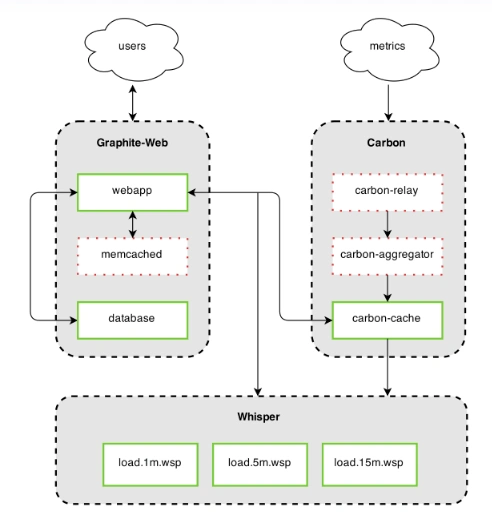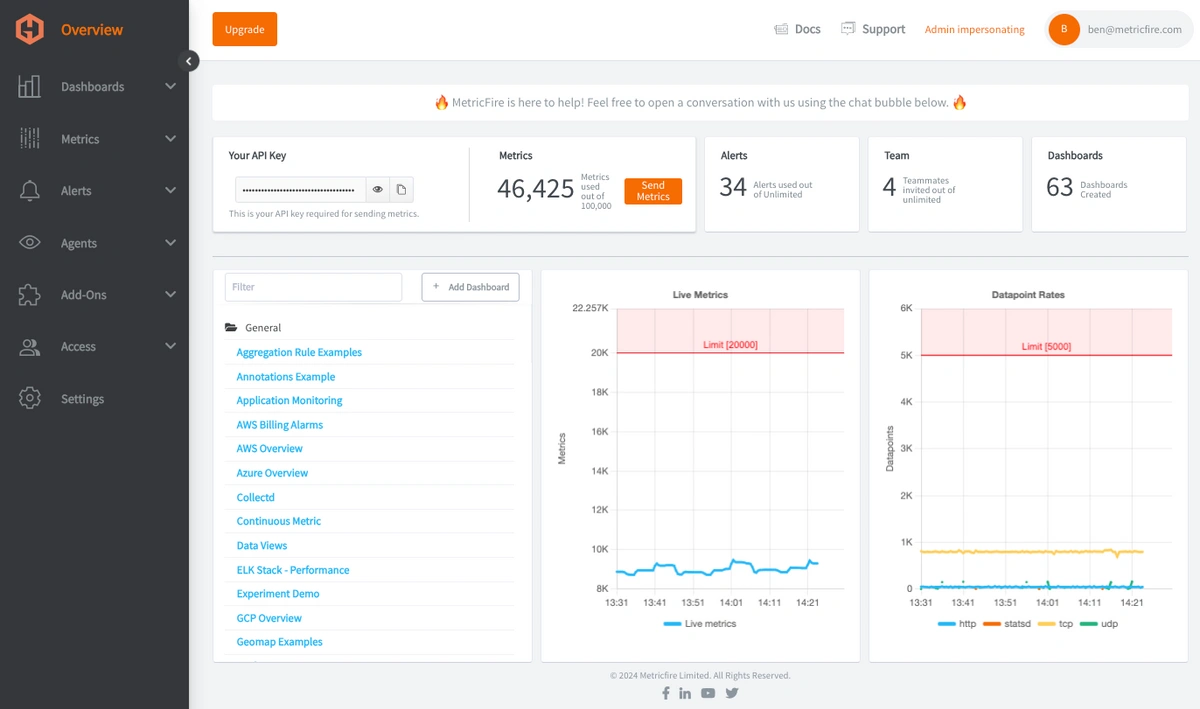Table of Contents
Introduction
Implementing a monitoring solution is no small task; with your company's data growing, it can feel impossible. Often, small teams develop their own monitoring infrastructure because it is more cost-effective than a platform. But when your business grows, your data does, too.
Monitoring can quickly become a bigger challenge than a small team can handle, and some companies need more resources to hire a developer dedicated to their monitoring. At this point, some businesses think starting over with a monitoring expert's help is a good idea. But completely starting over is a lot of work.
Luckily, hosted solutions exist, and some are happy to walk you through migrations and help you get started with a brand-new monitoring setup. You don't need to lose all the data from your previous solution because these platforms will walk you through how to import it.
What does making the switch look like? This article will explore that question and explain why migrating to a hosted solution is worth it.
In-House vs. Hosted Monitoring
In-House Monitoring
In-house monitoring means that your team monitors your entire infrastructure. Whether you monitor a network, cloud instances, or anything in between, the buck stops with you. You use open-source tools for data ingestion, dashboards, alerting, and more. You are responsible for ensuring all your monitoring software communicates with your devices, and if something is wrong, you either fix it or pay a consultant.
Pros: There are many reasons why companies choose self-developed monitoring. Here are some of them:
- No Fees: Open-source monitoring tools are free to use. These platforms have all the functionality you need and more with zero fees. However, with the free tools comes the hassle of setting it up with your data and no assistance.
- Customizable: Open-source platforms are customizable by default because they are not one-size-fits-all solutions. Making them do what you need requires time and effort, but the result is a tool aligned perfectly with your company's monitoring goals.
These advantages are why many large and resourceful enterprises build in-house monitoring solutions. They're also why small and large organizations are turning to MetricFire—because MetricFire offers the above advantages "as-a-service" in an easy-to-use, highly affordable package. Try it today!
Cons: While there are benefits to self-hosting your monitoring, there are many negative points. Below are some reasons why businesses choose to avoid self-hosted monitoring:
- High Auxiliary Costs: Even though you can avoid fees from hosted solutions by developing your monitoring infrastructure, you may run into long-term costs, such as hiring a developer to manage your monitoring, storage costs, configuration costs, and more. To learn how to save money on monitoring, check out this article!
- Scaling: As I mentioned before, many businesses think that starting small is the best option since they can keep their monitoring costs low, and it's not too much to handle by self-hosting initially. But when your business grows, so do your metrics. Self-hosting can quickly get out of control. Scaling from a hundred metrics to a hundred thousand is difficult (and expensive) to manage! Find a hosted solution that specializes in scaling to avoid these issues.
- Data Storage Limits: Some open-source tools like Prometheus don't provide efficient long-term storage. For this, you'll need to find a third-party data store, which may cost more than a hosted monitoring solution that stores and ingests data and provides dashboards. Hosted solutions often offer more than enough data storage and easy-to-use platforms with alerting, dashboards, integrations, and more.
- Lack of tools: Monitoring can be multifaceted; you will require alerting, dashboards, integrations, and more for your metrics, logs, and tracing. Most open-source tools handle ONE thing very well, but you will need another tool to help with your other monitoring requirements. For example, open-source Graphite can ingest large amounts of data quickly, but its dashboards are limited and, let's face it, ugly. You will need an extra tool like Grafana to get the necessary visualizations.
- Lack of support: Self-developed monitoring tools mean you get limited or no support through the setup process and beyond. Some open-source tools have better documentation than others, and sometimes, you can find answers to your questions on Reddit or elsewhere, but when you use a self-hosted solution, ultimately, it is up to you to ensure it is set up and working correctly.
Hosted Monitoring
Hosted monitoring means you can put your mind at ease and know that your monitoring partner has got you covered. A third-party company like MetricFire will ingest your data, so you don't have to worry about it! Depending on the platform you choose, they can walk you through step by step how to send your data, how to create dashboards, how to set alerts, and more!
Not all hosted solutions are equal, so you will need to do some homework to see which one is best for your use case. However, we recommend our platform as an easy, intuitive, and simple solution. Give it a try today!
Pros:
- Savings: While the cost of a hosted solution can be significant compared to an in-house setup, it can save you thousands of dollars a month in the long term. Many platforms offer free tiers or trials to save you even more money.
- MetricFire provides a completely free cardless trial for two weeks. Get started here!
- Scalability and Storage: Is your infrastructure prepared to support your business's growing needs? As your business expands, so does your data, and to access that data and gain the insights you need, you need a scalable solution with long-term storage.
- Support: This is the most significant benefit of getting a hosted solution rather than doing it yourself. When you do it yourself, you need to spend hours and hours on research, not to mention implementation. When you get a hosted solution, you get access to an expert team with a stake in helping you succeed. At MetricFire, we take pride in having 24/7 support so that our customers can have monitoring support whenever they need it.
- Integrations: Most hosted solutions have built-in integrations, so you don't need to worry about making tools in your tech stack work with each other and your monitoring system. Connect your accounts, and you are done! Not every integration is this easy, but having built-in integrations in a hosted solution is much easier than building them yourself.
Cons:
- Potentially costly: While a self-developed tool is usually free, apart from operating costs and time, hosted solutions cost money. Hosted monitoring prices cover costs you would have to pay if you were using a self-hosted solution, but not every team can afford a hosted solution.
- Not as customizable: Self-hosted solutions are specifically designed to fit your individual entity's requirements, whereas a hosted solution is designed for most developers' needs. If your business has particular needs for its monitoring solution, hosted options may not be for you.
Are you curious if MetricFire is a good fit for your requirements? Book a live demo to see our platform in action!
Benefits of moving to a hosted solution
Moving from a self-managed solution to a hosted one seems daunting, but there are many benefits. In addition to the ones mentioned above, there are the basics that impact your day-to-day workflow.
If you are thinking about moving to a hosted solution, ask yourself some of these questions:
- If you moved from your in-house solution to a hosted one, how much time would you save on monitoring a week?
- Are you a monitoring expert? Can you hire one?
- How many errors are you getting with your current setup? Is it accurate?
Many teams choose hosted solutions because it saves them hours of maintenance a week. According to Varun from EnglishScore, "MetricFire allows EnglishScore to find an issue in 2-3 minutes that could take 2-3 hours getting lost."
Once your hosted setup is complete, a dedicated team is ready to help, and as long as you are a customer, you never have to worry about missing data again.
Benefits of moving to MetricFire
So far, we've explained the difference between in-house and hosted monitoring. But if you've chosen the hosted route, new questions arise. Which one should you choose?
Each hosted solution is unique; some are easier to set up than others.
When you choose MetricFire, you can count on speedy and informative support. A pivotal reason to choose a hosted solution is so your team doesn't have to worry about monitoring. MetricFire isn't just a platform; we are your partner for all your monitoring requirements.
MetricFire has improved standard Graphite and offers additional tools and features that provide our customers with a robust and well-rounded monitoring solution.
We also have fast and friendly support and are dedicated to ensuring you get the highest possible value from our services.
MetricFire removes the burden of self-hosting your monitoring solution, allowing you more time and freedom to work on your most important tasks. You can measure, analyze, and visualize large amounts of data from your applications and infrastructure without the hassles of setting up your servers or worrying about scaling, storing data, alerting, or maintenance.
You need a monitoring solution to make data-driven decisions for your business. By monitoring your systems and observing trends in your data, you can get an instant overview of how your technology stack is performing.
MetricFire supports many APIs, integrations, and plugins that can help you obtain data and render it usefully. If you have questions about our products and services, our knowledgeable support team will respond quickly and advise you.
What Does an In-House to Hosted Monitoring Migration Look Like?
Moving to a hosted solution will vary depending on your current setup and what you plan to move to. But there are specific options we recommend:
- Keep your current setup until after your migration: Migrations are unpredictable. Depending on your current situation, they can be a smooth or tricky transition. We recommend ensuring that whatever you have in place stays in place until after the migration is complete so that you are covered if the migration takes longer than expected. With MetricFire, we can import your Whisper files, so you don't have to worry about missing data.
- Backup and Reference your historical data: It is always a good idea to back up data whenever you move it around. This way, you can compare data before and after the migration to ensure everything functions correctly. Things may get moved around during a migration, and you want to ensure everything is recovered.
- Reach out to support for help: If you choose MetricFire, we highly recommend using our support. We are here to help you, so if you have any questions, our team is happy to answer them!
Getting Started
Getting started with MetricFire is easy! Sign up for a free cardless trial and reach out to our support! We can walk you through how to send your first metrics.
If you aren't sure if a hosted solution or MetricFire is right for you, we'd love to talk with you. Contact us on LinkedIn, Twitter, or Facebook, or book a call!
Conclusion
In this article, we explored the difference between in-house and hosted monitoring solutions and looked at the benefits of migrating. We also shared some tips for getting started with data migration.
If your monitoring system is becoming increasingly challenging, you don't have to run it yourself. We would be happy to put your mind at ease by showing you that migrations don't have to be complicated. We can help you get started today!





